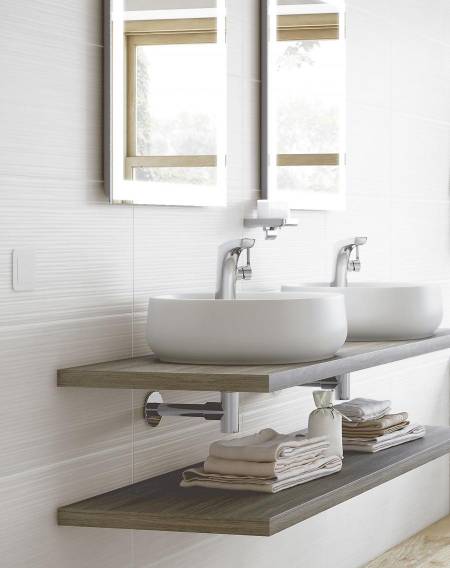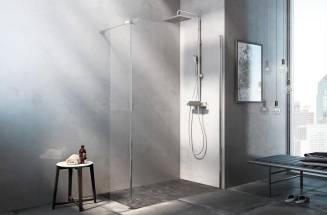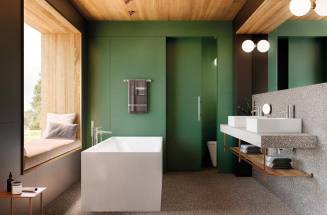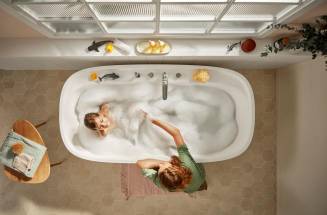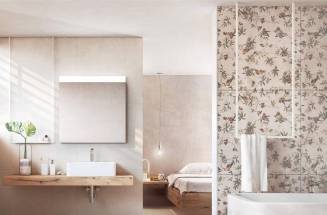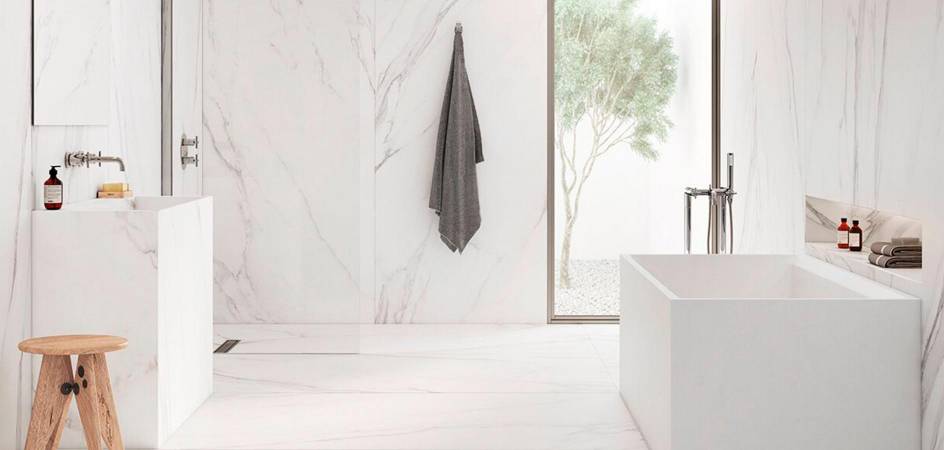
A MID CENTURY MODERN BATHROOM, WHAT ABOUT A RENOVATION IN THE TRENDIEST STYLE?
If you have been under the spell of the trendiest decoration for a while, you will be glad to know that shaping a Mid Century Modern bathroom is easier than you think. Join us in a journey through the keys to the style that marked the halfway point of the 20th century. Let’s start at the beginning. 1950s. Emerging post-war prosperity gives way to an elegant and functional style in which the echoes of Art Deco still resonate. From Europe, architects and interior designers propose functional homes with pure aesthetics, a new philosophy arisen from the German Bauhaus school, which opts for combining design and social change. Masterfully reinterpreted in the United States, the new decoration concept reaches a worldwide dimension. With sober colors and simple yet impeccable finishes, the Mid Mod style returns today with renovated force to highlight iconic details such as the geometrical tiles, marble floors or wooden bathroom furniture units. Let us show you!
Symbiosis with nature
The alliance with nature is doubtlessly one of the keys to the Mid Mod style, which plays with the fluidity between spaces to make the most of natural light. With different finishes, wood is the reference material in bathroom furniture while marble is preferred for floors, countertops and even walls. In fact, you will see that in many Mid Century Modern bathrooms walls in this material extend to the floor, an enveloping effect you will be able to achieve easily with the noble finishes of Mystery or Thinbig® Calacatta tiles.
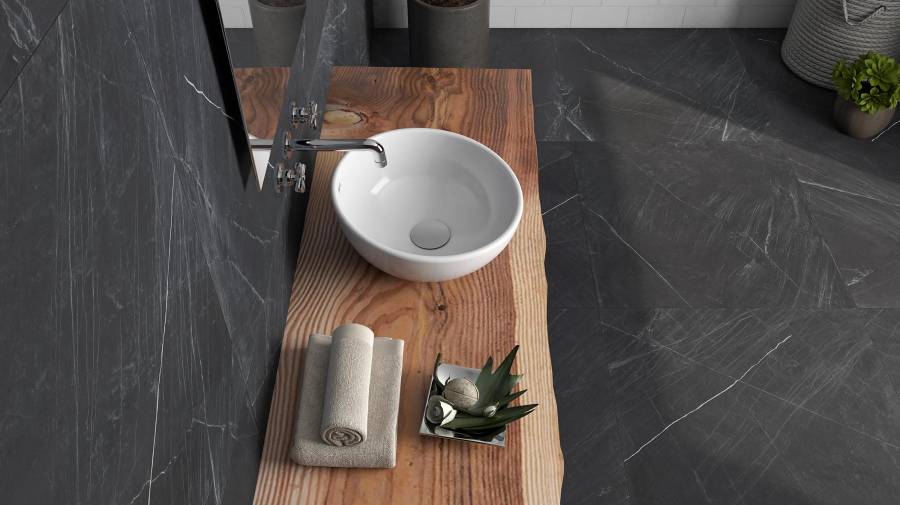
Sophisticated simplicity
With references such as Mies van der Rohe or Le Corbusier, the Mid Century Modern interiors remove any superfluous details to display an elegant simplicity. In this commitment to subtlety, bathroom decoration avoids stridencies and ornaments choosing a palette of sober tones and opting for bathroom accessories with pure finishes, without giving up innovating with faucet solutions like Insignia, which delve into charismatic shapes and colored finishes. We cannot forget its built-in bathrooms faucets, or those of the Loft collection, whose sophisticated cross-shaped handles add the perfect counterpoint to the strict lines of its spout.
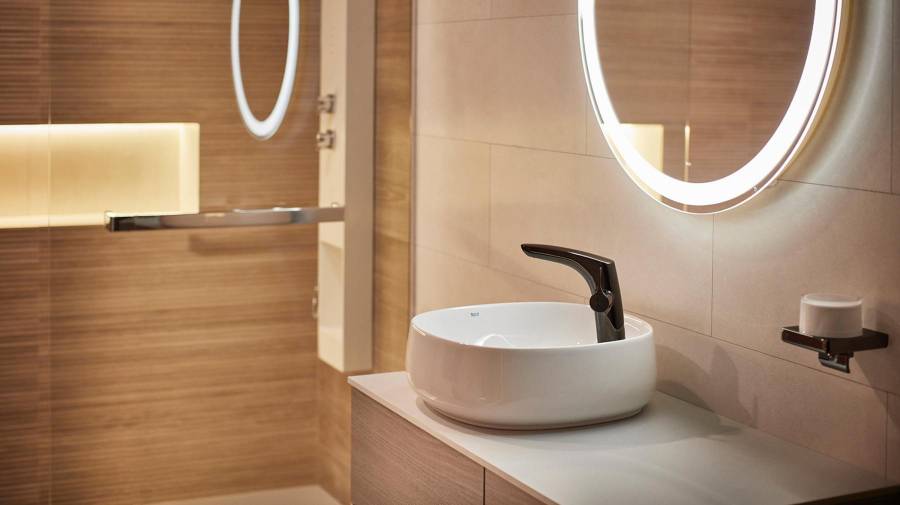
Passion for geometry
Still under the influence of North American Art Deco, the historic Mid Century Modern bathrooms and spaces showed a weakness for shapes and patterns. You will be able to join this passion with geometrical tiles for walls and floors, like the hexagons of the Derby collection without forgetting the timeless penny tile, incredibly versatile in Mid Mod interiors. This passion for polygons and figures is not limited to bathroom tiles, but also applies to other decorative elements such as round mirrors that you can find in collections such as Iridia, or the extremely fine Inspira basins manufactured in Fineceramic®.
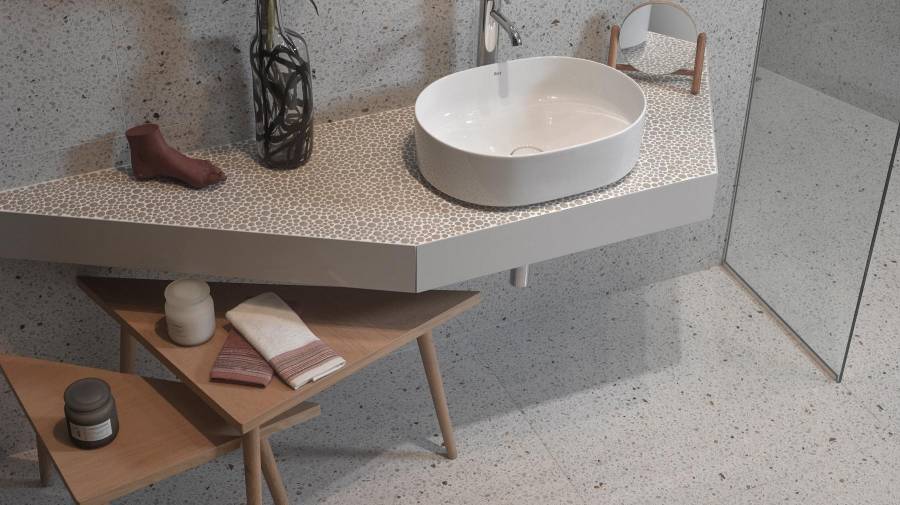
Maximum functionality
Complying with the principles of “function and form”, the Mid Century Modern uses pure lines to respect the essence of each element and guarantee its full usefulness. In this search for ergonomics we find, for instance, bathroom furniture with shorter or slightly tilted legs to reinforce their stability. Also solutions in which the handles disappear to be replaced by integrated knobs like the ones in the Lander collection, or the practical push opening of the Beyond base units.
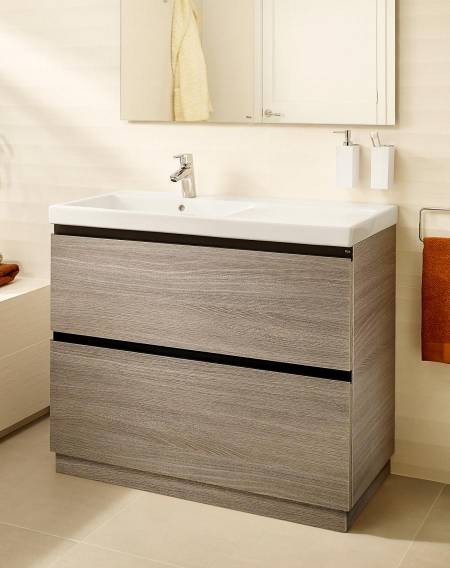
Visible structures
Finally, in its aim to highlight functionality, another of the qualities of Mid Century Style is to display the soul of things, in other words, its mechanisms and inner workings. Remembering the industrial production of the time, its proposals show beams in the ceiling and bricks on the walls, turning a cement texture or a basin with a visible syphon into a piece of art. Simple elegance that can be easily achieved with combinations such as the Savana countertop together with the Suma auxiliary unit or with light basin structures like the metallic one of Prisma.
